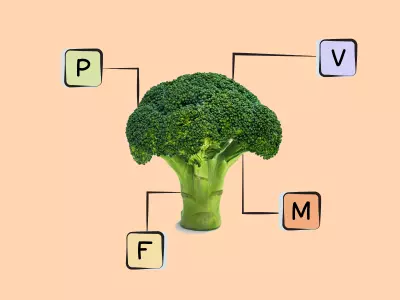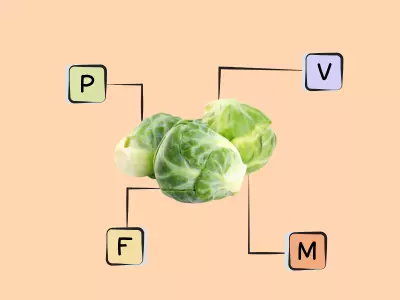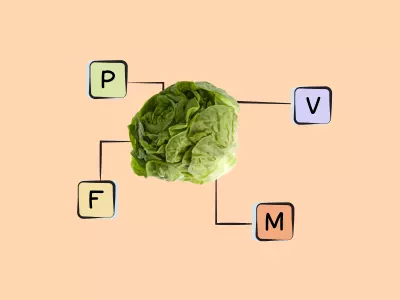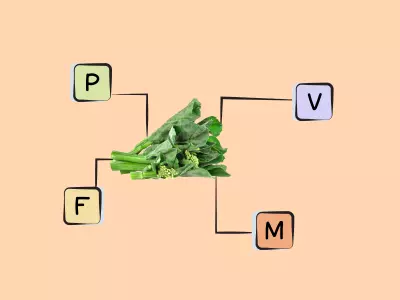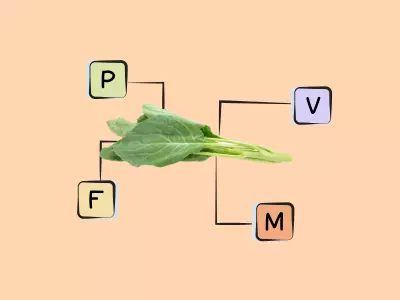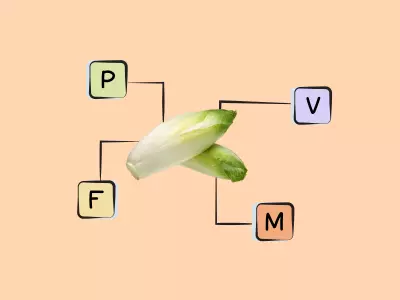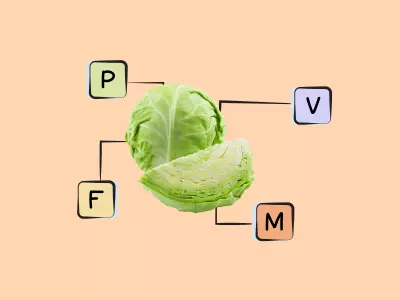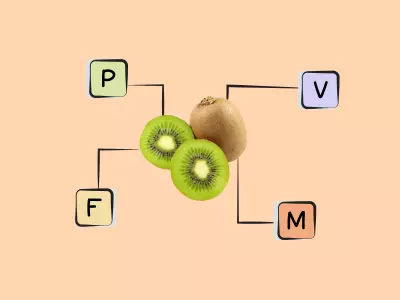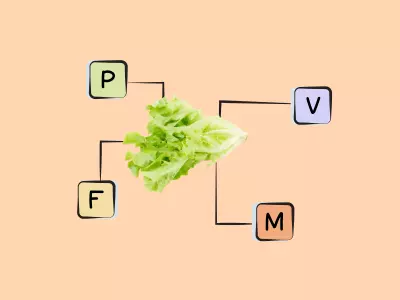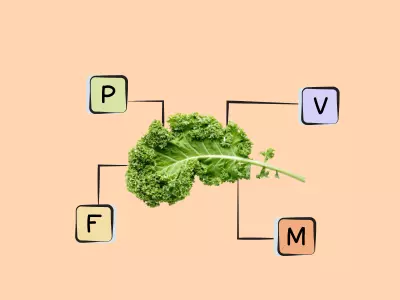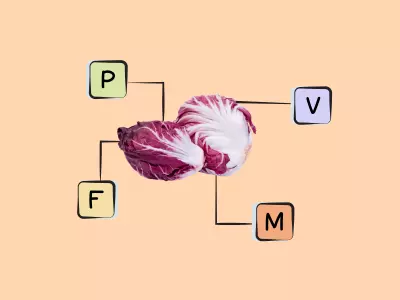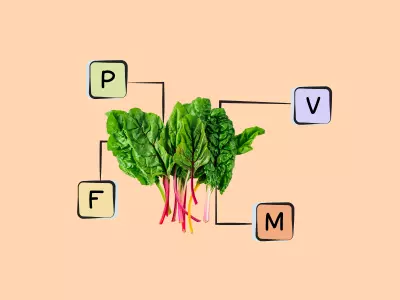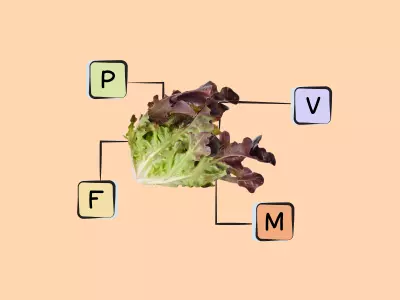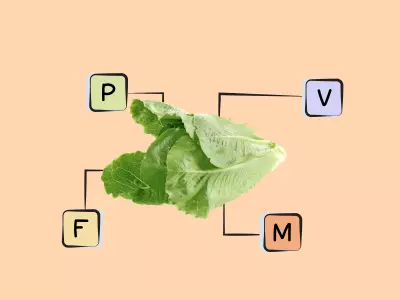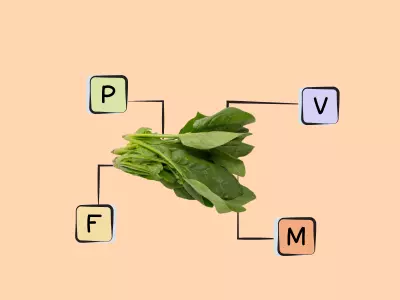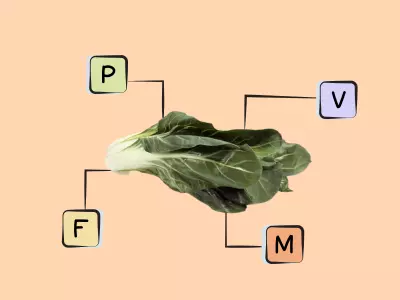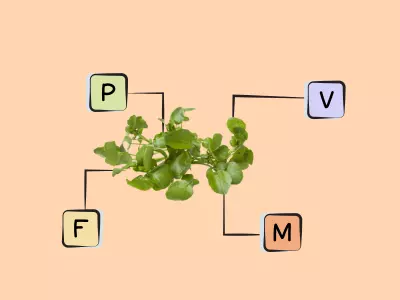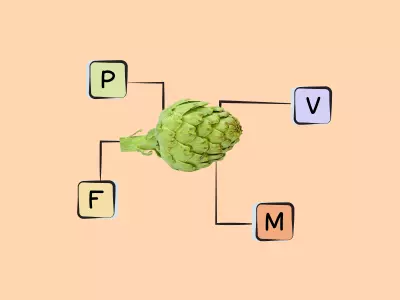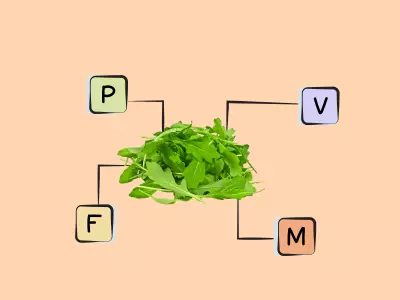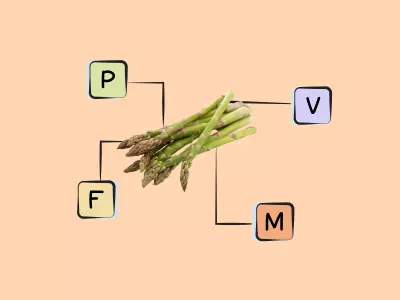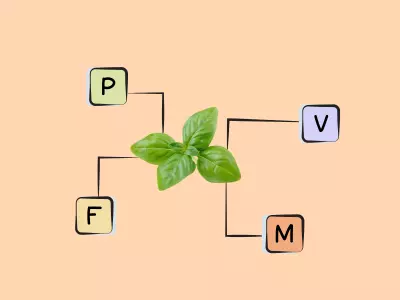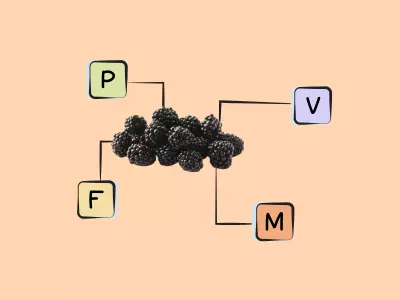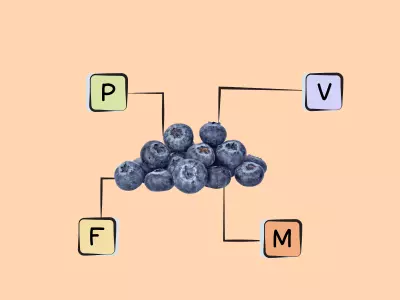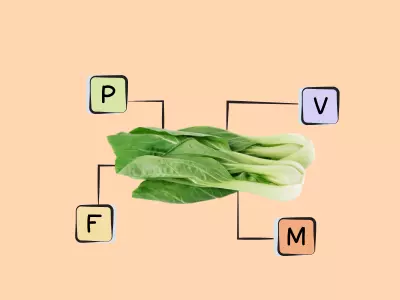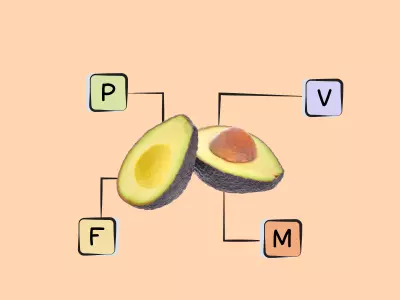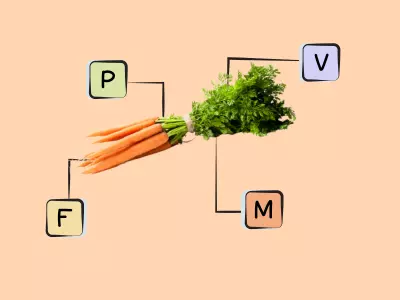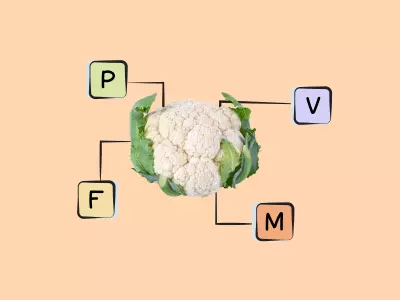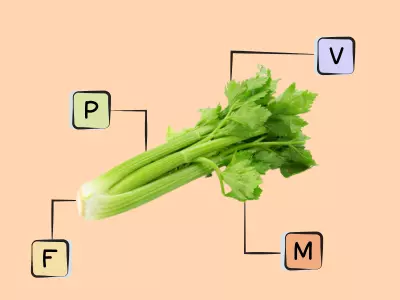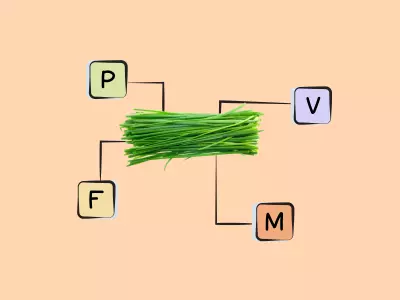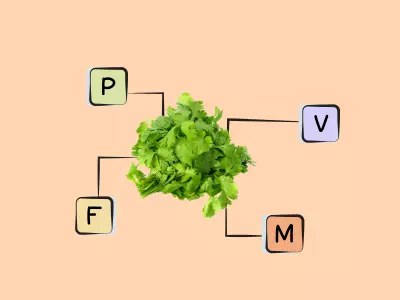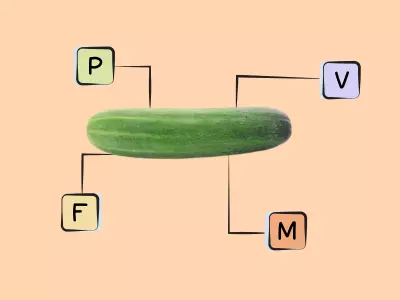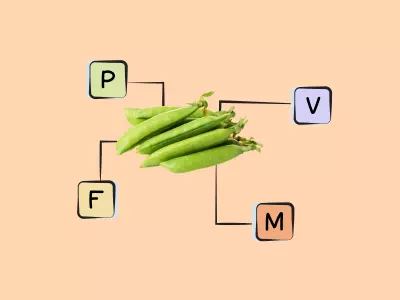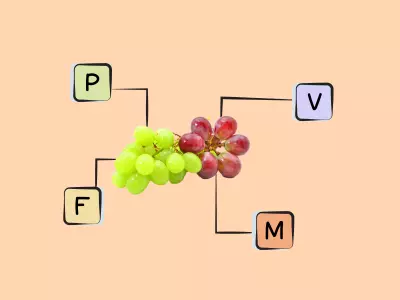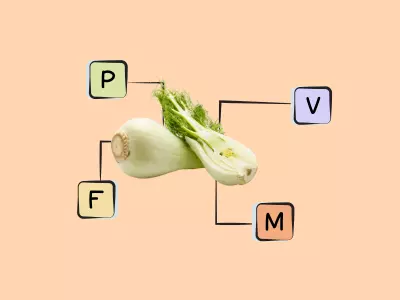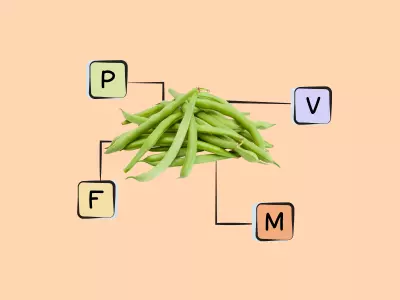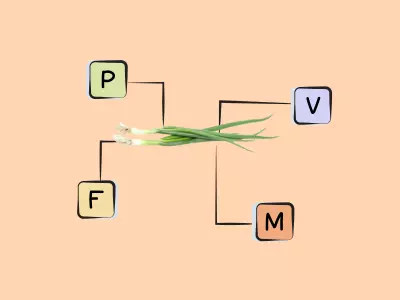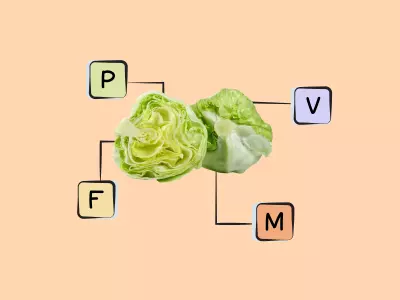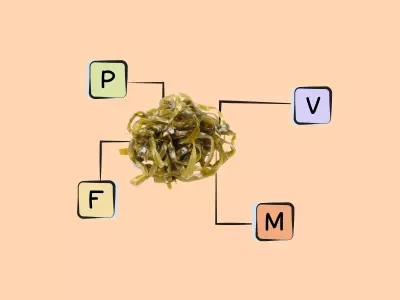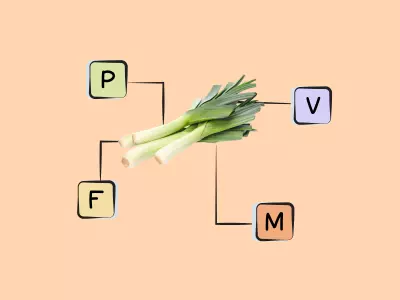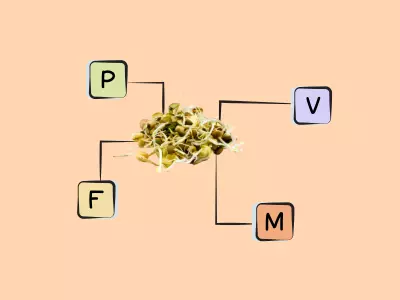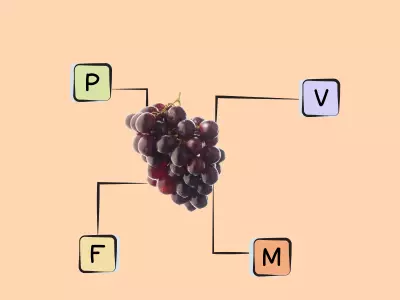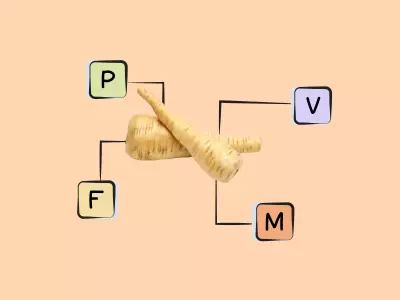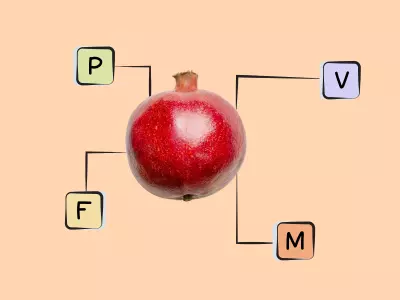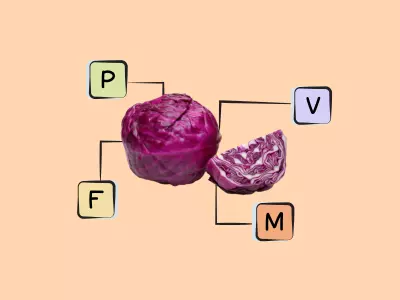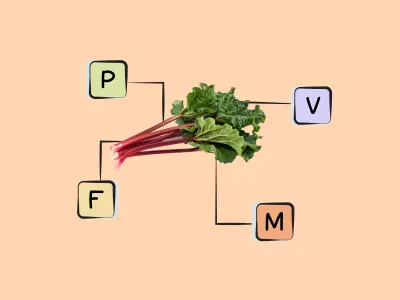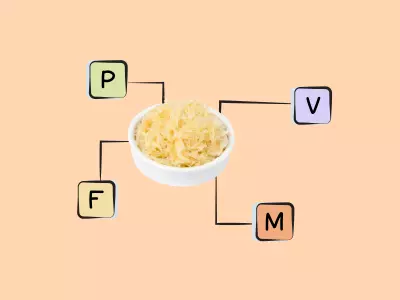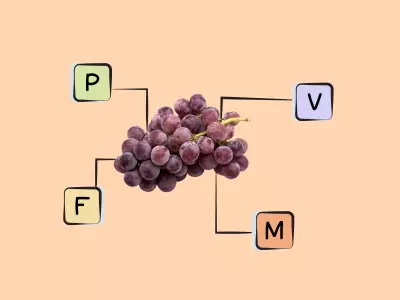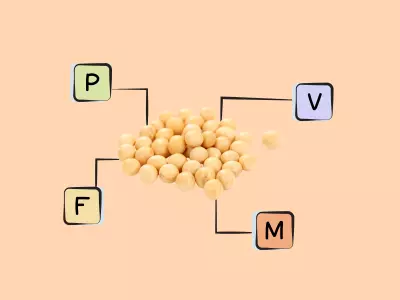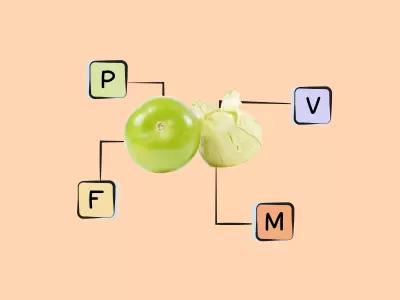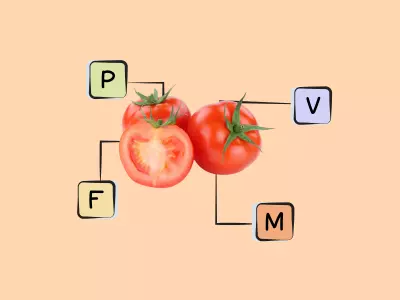Key Takeaways (expand)
- Vitamin K is technically a group of fat-soluble vitamins with a similar structure, existing in the forms of K1 (phylloquinone), multiple isoforms of K2 (menaquinones), and the synthetic form K3 (menadione).
- Vitamin K serves as a cofactor for proteins needed for blood coagulation (blood clotting), cellular function, bone metabolism, and the prevention of vessel mineralization.
- The vitamin K-dependent proteins needed for coagulation are synthesized in the liver, and include factor II, factor VII, factor IX, and factor X (which act as pro-coagulants), as well as protein C and protein S (which act as anti-coagulants).
- Factors II through X are core players in what’s known as the coagulation cascade—a series of events that stop bleeding through the formation of clots.
- Proteins C and S offset the coagulation cascade by exerting anticoagulation activity as needed, in turn safeguarding against uncontrolled clotting.
- The body has a very limited ability to store vitamin K, and as a result, recycles this nutrient through the vitamin K oxidation-reduction cycle.
- Vitamin K is needed for forming skeletal tissue, as well as for protecting against soft tissue calcification (such as in the arteries).
- Due to its molecular structure, vitamin K2 remains in circulation within the body for much longer than vitamin K1 (days, rather than hours); this allows vitamin K2 to be used more readily by various tissues, whereas vitamin K1 is mostly only used in the liver.
- Vitamin K1 also has relatively poor bioavailability compared to vitamin K2—with vitamin K1 being about 5 to 10% absorbed from food, and vitamin K2 being nearly 100% absorbed.
- Getting enough vitamin K helps protect cardiovascular health, reducing the risk of developing coronary heart disease, vascular calcification, and aortal stiffness.
- Vitamin K-dependent proteins are essential for bone health, and research suggests higher vitamin K intake is associated with higher bone mineral density and lower risk of fracture.
- Vitamin K has a synergistic effect with vitamin D when it comes to calcium regulation, giving these nutrients combined importance for skeletal health.
- Limited and/or preliminary evidence suggests that vitamin K could reduce inflammation, exert anti-cancer properties, boost brain function, and support endocrine health, but more human trials are needed on all of these topics!
- Although true vitamin K deficiency is uncommon (due to the body’s ability to conserve and recycle it), it’s more likely among people taking certain medications (such as warfarin) or who have malabsorption disorders.
- When it occurs, vitamin K deficiency can lead to impaired blood clotting or hemorrhaging—including bleeding gums, nosebleeds, heavy menstrual bleeding, or blood in the urine or stool.
- Good sources of vitamin K1 are high-chlorophyll plant foods such as green leafy vegetables broccoli, and Brussels sprouts; meanwhile, vitamin K2 is found in natto (a fermented soybean product), organ meats, egg yolks, some hard cheeses, butter, pork, and dark chicken meat.
Table of Contents[Hide][Show]
Vitamin K is actually a group of fat-soluble vitamins with a similar structure, existing in the forms of K1 (phylloquinone), multiple isoforms of K2 (menaquinones—which range from MK-2 to MK-14, numbered based on the repeats of 5-carbon units in their molecular side chain), and the less common synthetic form K3 (menadione). Whereas most vitamins were named in alphabetical order, the “K” in vitamin K actually comes from the Danish word for blood clotting, koagulation, due to its important role in blood clot formation (AKA coagulation!). In fact, vitamin K was first discovered by accident during cholesterol experiments in 1929, when scientists found that feeding chickens fat-free diets led to excessive bleeding—leading them to deduce that a “coagulation vitamin” existed and had been removed along with the dietary fat.
All forms of vitamin K are critical for making important proteins in the body that are involved in blood clotting and metabolism, and are also central to maintaining bone and cardiovascular health.
The richest food sources of vitamin K1 are high-chlorophyll plant foods such as green leafy vegetables (especially kale, chard, collard greens, and spinach), broccoli, and Brussels sprouts. Vitamin K2 is found in natto (a fermented soybean product), organ meats (especially liver), egg yolks, some hard cheeses, butter, pork, and dark chicken meat. High-quality olive oil also contains vitamin K.
Want to know the top 25 foods for this awesome nutrient?

The Top 25 Foods for Every Nutrient
The Top 25 Foods for Every Nutrient e-book is a well-organized, easy-to-use, grocery store-friendly guide to help you choose foods that fit your needs of 43 important nutrients while creating a balanced nutrient-dense diet.
Get two “Top 25” food lists for each nutrient, plus you’ll find RDA charts for everyone, informative visuals, fun facts, serving sizes and the 58 foods that are Nutrient Super Stars!
Buy now for instant digital access.
The Biological Roles of Vitamin K
Vitamin K serves as the essential cofactor for vitamin K-dependent proteins needed for blood coagulation, regulating cellular function, bone metabolism, and preventing vessel mineralization. More specifically, it’s required for the functioning of the gamma-glutamylcarboxylase enzyme, which carboxylates glutamic acid residues to gamma-carboxyglutamic acid.
The vitamin K-dependent proteins needed for coagulation are synthesized in the liver, and include factor II, factor VII, factor IX, and factor X (all of which act as pro-coagulants that prevent or stop bleeding), as well as protein C and protein S (which act as anti-coagulants that inhibit blood clotting). Factors II through X are core players in what’s known as the coagulation cascade, which is a series of interdependent events that stop bleeding through the formation of clots; importantly, these clotting factors need to bind calcium ions in order to be activated, and that calcium binding can only happen with the help of vitamin K-dependent carboxylation. Meanwhile, proteins C and S provide counterbalance to the coagulation cascade by exerting anticoagulation activity as needed, thus safeguarding against uncontrolled clotting (which can be just as dangerous as uncontrolled bleeding!). And, although low vitamin K can increase the risk of excessive bleeding, the opposite isn’t true: even very high vitamin K intake (whether in the form of vitamin K1 or K2) isn’t known to cause abnormal clotting, or even possess any toxicity.
Even though vitamin K is fat soluble, the body has a very limited ability to store it—and to compensate, it’s recycled via the vitamin K oxidation-reduction cycle. In this cycle, the reduced form of vitamin K (vitamin K hydroquinone) gets oxidized by the γ-glutamylcarboxylase enzyme to form vitamin K epoxide, in turn providing energy to drive protein carboxylation; vitamin K epoxide is then restored to vitamin K by another enzyme (vitamin K epoxide reductase), allowing the vitamin to be reused many times. Because of this continuous recycling, the body is able to decrease its dietary vitamin K requirement and protect against deficiency even when external vitamin K intake is limited.
Vitamin K is also needed for forming skeletal tissue and protecting against soft tissue calcification. Several bone-related proteins (including osteocalcin, matrix gamma-carboxylated glutamate protein (MGP), anticoagulation factor protein S, periostin, and Gla-rich protein) require vitamin K-dependent carboxylation in order to carry out their functions. For example, osteocalcin (a protein secreted by bone-forming cells called osteoblasts) relies on vitamin K-dependent carboxylation in order to effectively bind calcium, and matrix gamma-carboxylated glutamate protein (which is synthesized and secreted by vascular smooth muscle cells) requires vitamin K to prevent calcification in soft tissue (like cartilage, skin elastic fibers, and blood vessel walls).
Another less-known function of vitamin K is that it regulates a protein called growth arrest-specific gene 6 (Gas6), which acts as a cellular growth regulation factor and also possess cell-signaling activities. This protein is involved in a number of cellular functions, including phagocytosis, cell adhesion, cell proliferation, and protection against apoptosis; it also helps prevent or stop vascular bleeding, regulates platelet signaling, and plays important roles in the development and aging of the nervous system.
Although all forms of vitamin K function similarly in the body, research has demonstrated some differences between vitamin K1 and vitamin K2. Whereas vitamin K1 only stays in the blood for a few hours, vitamin K2 has a long side chain that allows it to remain in circulation for days. As a result, vitamin K1 is mostly transported to the liver and used there, while vitamin K2 appears to be used more readily in additional tissues throughout the body. Likewise, vitamin K1 has relatively poor bioavailability, with only about 5 to 10% of the vitamin K1 in spinach or broccoli being absorbed; meanwhile, vitamin K2 is almost 100% absorbed! And, studies examining the effects of vitamin K1 and K2 separately have shown that a single serving of vitamin K2-rich food alters measures of blood coagulation for much longer than vitamin K1-rich food.
Lastly, in plants, vitamin K1 acts as an electron receptor during photosynthesis—hence why it’s found in such high quantities in leafy green vegetables!
Interactions with Other Nutrients
Vitamin K also possesses some notable nutrient interactions. Very high intakes of vitamin E, for example, can inhibit the activity of vitamin K-dependent carboxylase, in turn interfering with the coagulation cascade. And, large doses of vitamin A can interfere with vitamin K absorption, leading to higher vitamin K requirements. Meanwhile, vitamin D and K work synergistically, especially for skeletal health and calcium regulation: while vitamin D enhances dietary calcium absorption and regulates the amount of calcium moved between bone stores and the blood, vitamin K controls where calcium ends up, helping deposit it in the bones and teeth instead of in soft tissue.
Drug Interactions with Vitamin K
For people at high risk of forming blood clots, anti-coagulation drugs are designed to work by specifically targeting the action of vitamin K. The common blood thinner warfarin (Coumadin), for example, inhibits vitamin K recycling by blocking the activity of vitamin K epoxide reductase—essentially inducing a vitamin K deficiency and interfering with the coagulation cascade. (Supplementing with high doses of vitamin K can cancel out the effects of these drugs, though, so patients taking them are advised to moderate their vitamin K intake!)
Nutrivore Is a Game-Changer—These 5 Free Guides Show You Why
Sign up for the free weekly Nutrivore Newsletter and get 5 high-value downloads—delivered straight to your inbox—that make healthy eating simple and sustainable.

Vitamin K in Health and Disease
Research shows that getting enough vitamin K helps protect cardiovascular health, including reducing vascular calcification, reducing aortal stiffness, and lowering the overall risk of developing heart disease. Higher vitamin K intake is also associated with higher bone mineral density and a reduced risk of fractures; here, it has a highly synergistic relationship with vitamin D for maintaining calcium homeostasis and bone health. And, there’s interesting but much more limited evidence that vitamin K could exhibit some anti-cancer properties, reduce inflammation, support endocrine health, and support brain function—but more research is needed in all of these areas.
Vitamin K and Cardiovascular Disease
Adequate blood levels of vitamin K have been associated with the prevention of some important chronic diseases. For example, vitamin K appears cardio-protective, with studies showing that people who consume adequate intakes have a 22% lower risk of developing cardiovascular disease compared to those who don’t. And, vitamin K2 may be particularly beneficial: in studies measuring vitamin K2 (menaquinone) intake specifically, every 10 microgram per day increase has been associated with a 9% reduction in the risk of coronary heart disease. Likewise, a prospective study found that people in the highest tertile of vitamin K2 intake had a 41% lower risk of coronary heart disease than people in the lowest tertile. One study also found that vitamin K2 intake was associated with 20% less calcification in the coronary artery (one of the hallmarks of cardiovascular disease!). And, other research shows that vitamin K2 supplementation significantly decreased aortal stiffness in postmenopausal women. These protective effects are likely due to the role of certain vitamin K-dependent proteins (like matrix Gla protein and Gla-rich protein) in preventing vascular calcification, in turn limiting the formation of arterial plaque.
Vitamin K and Bone Health
Because some vitamin K-dependent proteins are so essential for bone health, it’s believed that getting enough vitamin K could help protect against osteoporosis and fractures—and observational studies often reveal links between vitamin K intake and markers of bone health. For example, prospective studies have shown a 65% lower risk of hip fracture among people in the highest versus lowest quartile of vitamin K intake, and studies measuring plasma vitamin K1 have generally found that higher circulating levels of this nutrient are associated with lower fracture risk. And, while fewer studies exist specifically on vitamin K2 and bone health, the research that does exist has shown that in postmenopausal women, consuming natto (an extremely rich source of vitamin K2 in the form of MK-7) is associated with higher bone mineral density in the hip and a slower rate of bone mineral density loss in the neck. In men, too, higher natto consumption has been linked with higher bone mineral density in the hip and neck. Similarly, some studies suggest the use of vitamin K-antagonizing drugs like warfarin can result in some loss of bone mineral density and a possibly higher risk of fractures.
But, because the most common sources of vitamin K are leafy green vegetables, vitamin K could serve as a proxy for overall healthy eating—making it hard to determine what bone benefits are due to vitamin K specifically, versus other components of healthy diets (such as other micronutrients or phytonutrients in leafy greens, or dietary compounds like the isoflavones in natto). In fact, controlled interventions haven’t found a clear benefit of vitamin K supplementation (especially in the form of K1) on bone health among people who are already eating enough calcium and vitamin D. For example, a review of controlled trials of vitamin K1 supplementation (at doses ranging from 200 to 5000 micrograms per day) found little benefit for mineral density in the hip. That said, vitamin K2 supplementation might hold more promise for protecting against bone loss, with some studies of postmenopausal women showing that MK-4 supplementation (typically at doses of 45 micrograms daily for more than six months) leads to a significant reduction in both vertebral and non-vertebral fractures. However, these studies were small and not always placebo-controlled, and larger studies have mostly failed to replicate their findings. So, more research here is needed!
Vitamin K and Osteoarthritis
Vitamin K may have a protective role in the degenerative joint disease osteoarthritis, likely due to its effects on vitamin K-dependent cartilage and bone proteins.
In a 2023 prospective study of patients with osteoarthritis of the knee, higher baseline intake of vitamin K was associated with decreased symptoms over the course of two years follow-up. Similarly, a 2015 longitudinal and cross-sectional study found that compared with participants with sufficient vitamin K status, those with low vitamin K status were 1.7 times more likely to have articular cartilage damage progression, and 2.6 times more likely to have meniscus damage progression, two features of osteoarthritis.
A 2021 study also found that the use of vitamin K antagonist anticoagulants (such as warfarin and acenocoumarol) was associated with significantly increased risk of osteoarthritis. Specifically, among the 3494 participants in the study, those taking acenocoumarol had a 2.5-fold greater risk of osteoarthritis incidence and progression. This supports a significant role of vitamin K in this condition. And, a 2009 cohort study of elderly Japanese found that of all the nutrients assessed, vitamin K was the only one showing a protective association with osteoarthritis.
Vitamin K and Cognitive Function
Some research suggests vitamin K could help protect cognitive function. A 2022 cross-sectional study of older adults found a significant association between impaired cognitive function and low vitamin K status. Participants in the top tertile of vitamin K insufficiency (assessed by serum levels of undercarboxylated osteocalcin, a biomarker for vitamin K insufficiency) had 65% greater odds of cognitive impairment. Specific areas of cognitive impairment (orientation, calculation, and language) were likewise significantly associated with vitamin K insufficiency.
Another 2022 study measured vitamin K concentrations in four different regions of the brain, and found that higher brain concentrations were associated with 17 to 20% lower odds of dementia or mild cognitive impairment, as well as lower Alzheimer’s disease global pathology scores!
And, yet another 2022 study, this one looking at over 5,500 older adults in a Mediterranean population, found that increasing vitamin K intake over the course of two years was associated with better cognitive function scores, including semantic verbal fluency test scores and Mini-Mental State Examination scores.
Similar findings have appeared in a number of other studies, including a 2020 analysis of older Irish adults (which found that participants with better cognition had significantly higher vitamin K intake and serum vitamin K levels), a 2016 cross-sectional cohort study of older adults (which found that increased vitamin K intake was associated with fewer and less severe subjective memory complaints), and a 2022 analysis of National Health and Nutrition Examination Survey data (which found that vitamin K intake was protective against low cognitive performance).
Vitamin K and Other Health Conditions
Much more limited evidence also suggests that vitamin K could potentially reduce inflammation, exhibit anti-cancer effects, and support endocrine function; the results of future intervention trials will hopefully shine more light on these possibilities. And, vitamin K status has been linked to lower all-cause mortality (though as with its relationship with bone health, it’s hard to say for sure whether this is due to the effects of vitamin K itself, or other components of healthy eating).
Didn’t know vitamin K was this amazing? Maybe your friends will enjoy this too!
Health Effects of Vitamin K Deficiency
True vitamin K deficiency, at least at a clinical level, is fairly rare in developed countries—both due to its widespread presence in foods, and due to the body’s ability to conserve vitamin K by recycling it. Bacteria in a healthy gut microbiome can also synthesize vitamin K in the form of K2, potentially adding to the body’s available pool of this nutrient. However, adults taking vitamin K antagonists (such as warfarin) can be at higher risk of deficiency, as can people with liver damage or liver disease, cystic fibrosis, inflammatory bowel disease, or other fat malabsorption disorders. Long-term use of broad spectrum antibiotics may also lead to vitamin K insufficiency, due to reducing the absorption of vitamin K in the intestine and interfering with vitamin K synthesis by gut bacteria. And, while population surveys suggest that most people consume enough dietary vitamin K, more sophisticated assessments of vitamin K status (such as blood levels of uncarboxylated MGP) indicate that functional vitamin K insufficiency might be much more widespread—possibly due to the low bioavailability, retention, and transport of this nutrient, especially in the most commonly eaten form (vitamin K1).
Newborn infants, too, are at an increased risk of vitamin K deficiency even when their mothers have adequate vitamin K levels; this is because vitamin K has poor transfer across the placenta (so infants don’t have much vitamin K stored up when they’re born), because the vitamin K cycle isn’t always fully functional in newborns (especially if premature), and because breast milk is relatively low in vitamin K. Infants born from mothers taking anticonvulsant drugs like phenytoin, anti-tuberculosis drugs like isoniazid and rifampin, or anticoagulants like warfarin are also at a higher risk of deficiency.
When it does occur, vitamin K deficiency is most likely to show up as impaired blood clotting or hemorrhaging; symptoms of this include nosebleeds, bleeding gums, blood in the urine or stool, or heavy menstrual bleeding. In infants, vitamin K deficiency can manifest as a bleeding disorder called “vitamin K deficiency bleeding of the newborn,” which is potentially life-threatening (in fact, a number of pediatric organizations recommend vitamin K injections for newborns to safeguard against this risk!).
Everything You Need to Jump into Nutrivore TODAY!
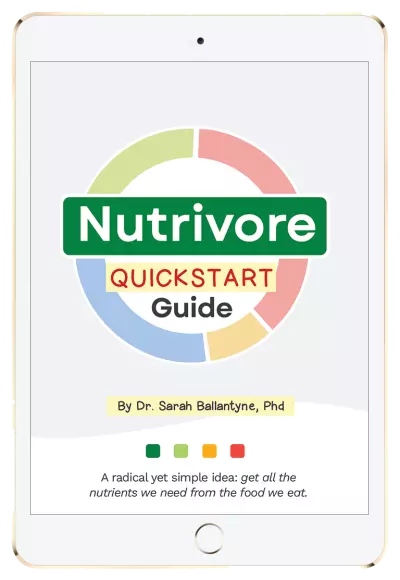
Nutrivore Quickstart Guide
The Nutrivore Quickstart Guide e-book explains why and how to eat a Nutrivore diet, introduces the Nutrivore Score, gives a comprehensive tour of the full range of essential and important nutrients!
Plus, you’ll find the Top 100 Nutrivore Score Foods, analysis of food groups, practical tips to increase the nutrient density of your diet, and look-up tables for the Nutrivore Score of over 700 foods.
Buy now for instant digital access.
How Much Vitamin K Do We Need?
The adequate intake level of vitamin K is 120 micrograms per day for adult men and 90 micrograms per day for adult women. For infants, children, and adolescents, the amount of vitamin K needed varies tremendously—beginning at 2 micrograms daily for infants up to 6 months old and 75 micrograms daily for teenagers aged 14 and older.
Because there’s no known toxicity for vitamin K, no tolerable upper limit has been set. However, it’s unclear whether these adequate intake levels are high enough to optimize the protective effects of vitamin K, especially when it comes to bone health. Likewise, vitamin K intake recommendations don’t distinguish between vitamin K1 and vitamin K2. Consuming a variety of vitamin K-rich foods from both plant sources (for vitamin K1) and fermented and/or animal foods (for vitamin K2) is ideal.
| 0 – 6 months | |||||
| 6 months to < 12 months | |||||
| 1 yr – 3 yrs | |||||
| 4 yrs – 8 yrs | |||||
| 9 yrs – 13 yrs | |||||
| 14 yrs – 18 yrs | |||||
| 19 yrs – 50 yrs | |||||
| 51+ yrs | |||||
| Pregnant (14 – 18 yrs) | |||||
| Pregnant (19 – 30 yrs) | |||||
| Pregnant (31 – 50 yrs) | |||||
| Lactating (14 – 18 yrs) | |||||
| Lactating (19 – 30 yrs) | |||||
| Lactating (31 – 50 yrs) |
Nutrient Daily Values
Nutrition requirements and recommended nutrient intake for infants, children, adolescents, adults, mature adults, and pregnant and lactating individuals.
Best Food Sources of Vitamin K
The following foods have high concentrations of vitamin K, containing at least 50% of the recommended dietary allowance per serving, making them our best food sources of this valuable vitamin!
Want to know the top 500 most nutrient-dense foods?

Top 500 Nutrivore Foods
The Top 500 Nutrivore Foods e-book is an amazing reference deck of the top 500 most nutrient-dense foods according to their Nutrivore Score. Think of it as the go-to resource for a super-nerd, to learn more and better understand which foods stand out, and why!
If you are looking for a quick-reference guide to help enhance your diet with nutrients, and dive into the details of your favorite foods, this book is your one-stop-shop!
Buy now for instant digital access.
Good Food Sources of Vitamin K
The following foods are also excellent or good sources of vitamin K, containing at least 10% (and up to 50%) of the daily value per serving.

Merch and Household Goods
Check out our collection of practical and nerdtastic T-shirts, totes, and more!
Citations
Expand to see all scientific references for this article.
Apalset EM, Gjesdal CG, Eide GE, Tell GS. Intake of vitamin K1 and K2 and risk of hip fractures: The Hordaland Health Study. Bone. 2011 Nov;49(5):990-5. doi: 10.1016/j.bone.2011.07.035.
Azuma K, Osuka Y, Kojima N, Sasai H, Kim H, Inoue S. Association of Vitamin K Insufficiency With Cognitive Dysfunction in Community-Dwelling Older Adults. Front Nutr. 2022 Jan 31;8:811831. doi: 10.3389/fnut.2021.811831.
Bell RG. Metabolism of vitamin K and prothrombin synthesis: anticoagulants and the vitamin K–epoxide cycle. Fed Proc. 1978 Oct;37(12):2599-604.
Bellinge JW, Dalgaard F, Murray K, Connolly E, Blekkenhorst LC, Bondonno CP, Lewis JR, Sim M, Croft KD, Gislason G, Torp-Pedersen C, Tjønneland A, Overvad K, Hodgson JM, Schultz C, Bondonno NP. Vitamin K Intake and Atherosclerotic Cardiovascular Disease in the Danish Diet Cancer and Health Study. J Am Heart Assoc. 2021 Aug 17;10(16):e020551. doi: 10.1161/JAHA.120.020551.
Boer CG, Szilagyi I, Nguyen NL, Neogi T, Meulenbelt I, Ikram MA, Uitterlinden AG, Bierma-Zeinstra S, Stricker BH, van Meurs JB. Vitamin K antagonist anticoagulant usage is associated with increased incidence and progression of osteoarthritis. Ann Rheum Dis. 2021 May;80(5):598-604. doi: 10.1136/annrheumdis-2020-219483.
Bolton-Smith C, McMurdo ME, Paterson CR, Mole PA, Harvey JM, Fenton ST, Prynne CJ, Mishra GD, Shearer MJ. Two-year randomized controlled trial of vitamin K1 (phylloquinone) and vitamin D3 plus calcium on the bone health of older women. J Bone Miner Res. 2007 Apr;22(4):509-19. doi: 10.1359/jbmr.070116.
Booth SL, Golly I, Sacheck JM, Roubenoff R, Dallal GE, Hamada K, Blumberg JB. Effect of vitamin E supplementation on vitamin K status in adults with normal coagulation status. Am J Clin Nutr. 2004 Jul;80(1):143-8. doi: 10.1093/ajcn/80.1.143.
Booth SL, Mayer J. Warfarin use and fracture risk. Nutr Rev. 2000 Jan;58(1):20-2. doi: 10.1111/j.1753-4887.2000.tb01820.x.
Booth SL, Tucker KL, Chen H, Hannan MT, Gagnon DR, Cupples LA, Wilson PW, Ordovas J, Schaefer EJ, Dawson-Hughes B, Kiel DP. Dietary vitamin K intakes are associated with hip fracture but not with bone mineral density in elderly men and women. Am J Clin Nutr. 2000 May;71(5):1201-8. doi: 10.1093/ajcn/71.5.1201.
Booth SL. Roles for vitamin K beyond coagulation. Annu Rev Nutr. 2009;29:89-110. doi: 10.1146/annurev-nutr-080508-141217.
Booth SL, Shea MK, Barger K, Leurgans SE, James BD, Holland TM, Agarwal P, Fu X, Wang J, Matuszek G, Schneider JA. Association of vitamin K with cognitive decline and neuropathology in community-dwelling older persons. Alzheimers Dement (N Y). 2022 Apr 20;8(1):e12255. doi: 10.1002/trc2.12255.
Booth SL. Vitamin K: food composition and dietary intakes. Food Nutr Res. 2012;56. doi: 10.3402/fnr.v56i0.5505.
Braam LA, Knapen MH, Geusens P, Brouns F, Hamulyák K, Gerichhausen MJ, Vermeer C. Vitamin K1 supplementation retards bone loss in postmenopausal women between 50 and 60 years of age. Calcif Tissue Int. 2003 Jul;73(1):21-6. doi: 10.1007/s00223-002-2084-4.
Camacho-Barcia L, García-Gavilán J, Martínez-González MÁ, Fernández-Aranda F, Galié S, Corella D, Cuenca-Royo A, Romaguera D, Vioque J, Alonso-Gómez ÁM, Wärnberg J, Martínez JA, Serra-Majem L, Estruch R, Bernal-López MR, Lapetra J, Pintó X, Tur JA, Garcia-Rios A, Bueno-Cavanillas A, Delgado-Rodríguez M, Matía-Martín P, Daimiel L, Martín-Sánchez V, Vidal J, Vázquez C, Ros E, Canela MR, Sorlí JV, de la Torre R, Konieczna J, Oncina-Cánovas A, Tojal-Sierra L, Pérez-López J, Abete I, Sánchez-Villegas A, Casas R, Muñoz-Garach A, Santos-Lozano JM, Bouzas C, Razquin C, Martínez-Lacruz R, Castañer O, Yañez AM, Valls-Enguix R, Belló-Mora MC, Basterra-Gortari J, Basora J, Salas-Salvadó J, Bulló M. Vitamin K dietary intake is associated with cognitive function in an older adult Mediterranean population. Age Ageing. 2022 Feb 2;51(2):afab246. doi: 10.1093/ageing/afab246.
Cheung CL, Sahni S, Cheung BM, Sing CW, Wong IC. Vitamin K intake and mortality in people with chronic kidney disease from NHANES III. Clin Nutr. 2015 Apr;34(2):235-40. doi: 10.1016/j.clnu.2014.03.011.
Ferland G. Vitamin K and the nervous system: an overview of its actions. Adv Nutr. 2012 Mar 1;3(2):204-12. doi: 10.3945/an.111.001784.
Feskanich D, Weber P, Willett WC, Rockett H, Booth SL, Colditz GA. Vitamin K intake and hip fractures in women: a prospective study. Am J Clin Nutr. 1999 Jan;69(1):74-9. doi: 10.1093/ajcn/69.1.74.
Hao G, Zhang B, Gu M, Chen C, Zhang Q, Zhang G, Cao X. Vitamin K intake and the risk of fractures: A meta-analysis. Medicine (Baltimore). 2017 Apr;96(17):e6725. doi: 10.1097/MD.0000000000006725.
Harshman SG, Shea MK. The Role of Vitamin K in Chronic Aging Diseases: Inflammation, Cardiovascular Disease, and Osteoarthritis. Curr Nutr Rep. 2016 Jun;5(2):90-98. doi: 10.1007/s13668-016-0162-x.
Haugsgjerd TR, Egeland GM, Nygård OK, Vinknes KJ, Sulo G, Lysne V, Igland J, Tell GS. Association of dietary vitamin K and risk of coronary heart disease in middle-age adults: the Hordaland Health Study Cohort. BMJ Open. 2020 May 21;10(5):e035953. doi: 10.1136/bmjopen-2019-035953.
Holmes MV, Hunt BJ, Shearer MJ. The role of dietary vitamin K in the management of oral vitamin K antagonists. Blood Rev. 2012 Jan;26(1):1-14. doi: 10.1016/j.blre.2011.07.002.
Institute of Medicine (US) Panel on Micronutrients. Dietary Reference Intakes for Vitamin A, Vitamin K, Arsenic, Boron, Chromium, Copper, Iodine, Iron, Manganese, Molybdenum, Nickel, Silicon, Vanadium, and Zinc. Washington (DC): National Academies Press (US); 2001. 5, Vitamin K.
Jagannath VA, Fedorowicz Z, Thaker V, Chang AB. Vitamin K supplementation for cystic fibrosis. Cochrane Database Syst Rev. 2013 Apr 30;(4):CD008482. doi: 10.1002/14651858.CD008482.pub3.
Jamal SA, Browner WS, Bauer DC, Cummings SR. Warfarin use and risk for osteoporosis in elderly women. Study of Osteoporotic Fractures Research Group. Ann Intern Med. 1998 May 15;128(10):829-32. doi: 10.7326/0003-4819-128-10-199805150-00006.
Juanola-Falgarona M, Salas-Salvadó J, Martínez-González MÁ, Corella D, Estruch R, Ros E, Fitó M, Arós F, Gómez-Gracia E, Fiol M, Lapetra J, Basora J, Lamuela-Raventós RM, Serra-Majem L, Pintó X, Muñoz MÁ, Ruiz-Gutiérrez V, Fernández-Ballart J, Bulló M. Dietary intake of vitamin K is inversely associated with mortality risk. J Nutr. 2014 May;144(5):743-50. doi: 10.3945/jn.113.187740.
Kidd PM. Vitamins D and K as pleiotropic nutrients: clinical importance to the skeletal and cardiovascular systems and preliminary evidence for synergy. Altern Med Rev. 2010 Sep;15(3):199-222.
Kiely A, Ferland G, Ouliass B, O’Toole PW, Purtill H, O’Connor EM. Vitamin K status and inflammation are associated with cognition in older Irish adults. Nutr Neurosci. 2020 Aug;23(8):591-599. doi: 10.1080/1028415X.2018.1536411.
Kumar D, Greer FR, Super DM, Suttie JW, Moore JJ. Vitamin K status of premature infants: implications for current recommendations. Pediatrics. 2001 Nov;108(5):1117-22. doi: 10.1542/peds.108.5.1117.
Kurnik D, Loebstein R, Rabinovitz H, Austerweil N, Halkin H, Almog S. Over-the-counter vitamin K1-containing multivitamin supplements disrupt warfarin anticoagulation in vitamin K1-depleted patients. A prospective, controlled trial. Thromb Haemost. 2004 Nov;92(5):1018-24. doi: 10.1160/TH04-06-0346.
Lees JS, Chapman FA, Witham MD, Jardine AG, Mark PB. Vitamin K status, supplementation and vascular disease: a systematic review and meta-analysis. Heart. 2019 Jun;105(12):938-945. doi: 10.1136/heartjnl-2018-313955.
Liao Z, Chang J, Zhu Z, Han W, Meng T, Zheng S, Tu L, Antony B, Winzenberg T, Wluka AE, Cicuttini F, Ding C. Associations Between Dietary Intake of Vitamin K and Changes in Symptomatic and Structural Changes in Patients With Knee Osteoarthritis. Arthritis Care Res (Hoboken). 2023 Jul;75(7):1503-1510. doi: 10.1002/acr.24964.
Misra D, Booth SL, Tolstykh I, Felson DT, Nevitt MC, Lewis CE, Torner J, Neogi T. Vitamin K deficiency is associated with incident knee osteoarthritis. Am J Med. 2013 Mar;126(3):243-8. doi: 10.1016/j.amjmed.2012.10.011.
Moore AE, Kim E, Dulnoan D, Dolan AL, Voong K, Ahmad I, Gorska R, Harrington DJ, Hampson G. Serum vitamin K1 (phylloquinone) is associated with fracture risk and hip strength in post-menopausal osteoporosis: A cross-sectional study. Bone. 2020 Dec;141:115630. doi: 10.1016/j.bone.2020.115630.
Mott A, Bradley T, Wright K, Cockayne ES, Shearer MJ, Adamson J, Lanham-New SA, Torgerson DJ. Effect of vitamin K on bone mineral density and fractures in adults: an updated systematic review and meta-analysis of randomised controlled trials. Osteoporos Int. 2019 Aug;30(8):1543-1559. doi: 10.1007/s00198-019-04949-0.
Nakajima S, Iijima H, Egawa S, Shinzaki S, Kondo J, Inoue T, Hayashi Y, Ying J, Mukai A, Akasaka T, Nishida T, Kanto T, Tsujii M, Hayashi N. Association of vitamin K deficiency with bone metabolism and clinical disease activity in inflammatory bowel disease. Nutrition. 2011 Oct;27(10):1023-8. doi: 10.1016/j.nut.2010.10.021.
Nishiguchi T, Yamashita M, Maeda M, Matsuyama K, Kobayashi T, Kanayama N, Terao T. Improvement of vitamin K status of breastfeeding infants with maternal supplement of vitamin K2 (MK40). Semin Thromb Hemost. 2002 Dec;28(6):533-8. doi: 10.1055/s-2002-36697.
Nowak JK, Grzybowska-Chlebowczyk U, Landowski P, Szaflarska-Poplawska A, Klincewicz B, Adamczak D, Banasiewicz T, Plawski A, Walkowiak J. Prevalence and correlates of vitamin K deficiency in children with inflammatory bowel disease. Sci Rep. 2014 Apr 24;4:4768. doi: 10.1038/srep04768.
Oka H, Akune T, Muraki S, En-yo Y, Yoshida M, Saika A, Sasaki S, Nakamura K, Kawaguchi H, Yoshimura N. Association of low dietary vitamin K intake with radiographic knee osteoarthritis in the Japanese elderly population: dietary survey in a population-based cohort of the ROAD study. J Orthop Sci. 2009 Nov;14(6):687-92. doi: 10.1007/s00776-009-1395-y.
Palmer CR, Bellinge JW, Dalgaard F, Sim M, Murray K, Connolly E, Blekkenhorst LC, Bondonno CP, Croft KD, Gislason G, Tjønneland A, Overvad K, Schultz C, Lewis JR, Hodgson JM, Bondonno NP. Association between vitamin K1 intake and mortality in the Danish Diet, Cancer, and Health cohort. Eur J Epidemiol. 2021 Oct;36(10):1005-1014. doi: 10.1007/s10654-021-00806-9.
Rees K, Guraewal S, Wong YL, Majanbu DL, Mavrodaris A, Stranges S, Kandala NB, Clarke A, Franco OH. Is vitamin K consumption associated with cardio-metabolic disorders? A systematic review. Maturitas. 2010 Oct;67(2):121-8. doi: 10.1016/j.maturitas.2010.05.006.
Rejnmark L, Vestergaard P, Charles P, Hermann AP, Brot C, Eiken P, Mosekilde L. No effect of vitamin K1 intake on bone mineral density and fracture risk in perimenopausal women. Osteoporos Int. 2006;17(8):1122-32. doi: 10.1007/s00198-005-0044-3.
Rønn SH, Harsløf T, Oei L, Pedersen SB, Langdahl BL. The effect of vitamin MK-7 on bone mineral density and microarchitecture in postmenopausal women with osteopenia, a 3-year randomized, placebo-controlled clinical trial. Osteoporos Int. 2021 Jan;32(1):185-191. doi: 10.1007/s00198-020-05638-z.
Schurgers LJ, Shearer MJ, Hamulyák K, Stöcklin E, Vermeer C. Effect of vitamin K intake on the stability of oral anticoagulant treatment: dose-response relationships in healthy subjects. Blood. 2004 Nov 1;104(9):2682-9. doi: 10.1182/blood-2004-04-1525.
Shea MK, Barger K, Booth SL, Matuszek G, Cushman M, Benjamin EJ, Kritchevsky SB, Weiner DE. Vitamin K status, cardiovascular disease, and all-cause mortality: a participant-level meta-analysis of 3 US cohorts. Am J Clin Nutr. 2020 Jun 1;111(6):1170-1177. doi: 10.1093/ajcn/nqaa082.
Shea MK, Kritchevsky SB, Hsu FC, Nevitt M, Booth SL, Kwoh CK, McAlindon TE, Vermeer C, Drummen N, Harris TB, Womack C, Loeser RF; Health ABC Study. The association between vitamin K status and knee osteoarthritis features in older adults: the Health, Aging and Body Composition Study. Osteoarthritis Cartilage. 2015 Mar;23(3):370-8. doi: 10.1016/j.joca.2014.12.008.
Shearer MJ. The roles of vitamins D and K in bone health and osteoporosis prevention. Proc Nutr Soc. 1997 Nov;56(3):915-37. doi: 10.1079/pns19970099.
Soutif-Veillon A, Ferland G, Rolland Y, Presse N, Boucher K, Féart C, Annweiler C. Increased dietary vitamin K intake is associated with less severe subjective memory complaint among older adults. Maturitas. 2016 Nov;93:131-136. doi: 10.1016/j.maturitas.2016.02.004.
Tie JK, Jin DY, Straight DL, Stafford DW. Functional study of the vitamin K cycle in mammalian cells. Blood. 2011 Mar 10;117(10):2967-74. doi: 10.1182/blood-2010-08-304303.
Torbergsen AC, Watne LO, Wyller TB, Frihagen F, Strømsøe K, Bøhmer T, Mowe M. Vitamin K1 and 25(OH)D are independently and synergistically associated with a risk for hip fracture in an elderly population: a case control study. Clin Nutr. 2015 Feb;34(1):101-6. doi: 10.1016/j.clnu.2014.01.016.
van den Heuvel EG, van Schoor NM, Lips P, Magdeleyns EJ, Deeg DJ, Vermeer C, den Heijer M. Circulating uncarboxylated matrix Gla protein, a marker of vitamin K status, as a risk factor of cardiovascular disease. Maturitas. 2014 Feb;77(2):137-41. doi: 10.1016/j.maturitas.2013.10.008.
Violi F, Lip GY, Pignatelli P, Pastori D. Interaction Between Dietary Vitamin K Intake and Anticoagulation by Vitamin K Antagonists: Is It Really True?: A Systematic Review. Medicine (Baltimore). 2016 Mar;95(10):e2895. doi: 10.1097/MD.0000000000002895.
Vitamin K: Fact Sheet for Health Professionals. National Institutes of Health (NIH) Office of Dietary Supplements. 29 Mar 2021.
Wang A, Zhao M, Luo J, Zhang T, Zhang D. Association of Dietary Vitamin K Intake With Cognition in the Elderly. Front Nutr. 2022 Jun 23;9:900887. doi: 10.3389/fnut.2022.900887.
Zwakenberg SR, den Braver NR, Engelen AIP, Feskens EJM, Vermeer C, Boer JMA, Verschuren WMM, van der Schouw YT, Beulens JWJ. Vitamin K intake and all-cause and cause specific mortality. Clin Nutr. 2017 Oct;36(5):1294-1300. doi: 10.1016/j.clnu.2016.08.017.


